Undoubtedly one of the unique selling points of Stan Lee and Steve Ditko’s early adventures of Spider-Man was the ambiguity in their protagonist. Previous golden-age heroes from the ‘40s and ’50s arrived on the page fully formed and definitive; Bruce Wayne had already spent years training as Batman before his first appearance in Detective Comics, and likewise Clark Kent had grown to super-adulthood by the time he arrived in Metropolis in Action Comics. Young Peter Parker did not get to enjoy this anonymity; he was bitten by a radioactive spider in Amazing Fantasy #15, and his moral compass found it’s true direction slowly over the months of Amazing Spider-Man comics that followed.
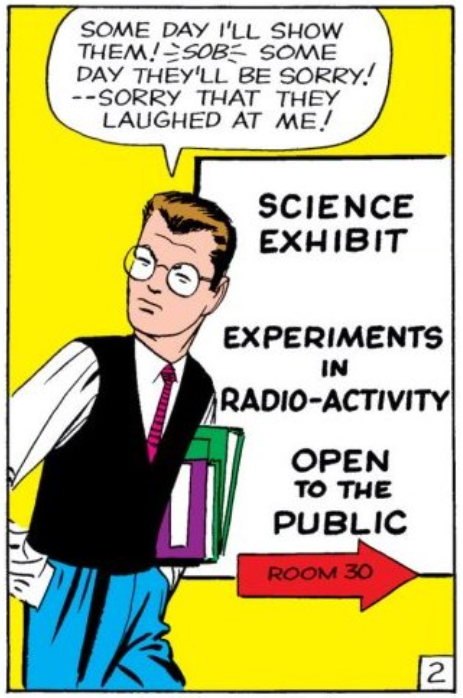
Those early issues of Amazing Spider-Man are amongst my favourite of all super hero comics; here’s what I love about what Stan and Steve created:
(i) Peter is selfish
The origin story is now very well established; Uncle Ben died because Peter did not take the responsibility to stop the petty thief that would eventually go on to break into his house and shoot him. But even after this, Peter did not initially face super-villains for altruistic reasons. Spider-Man faced his first super-foe (The Chameleon) because he had to clear his name of the villain’s crimes. Likewise, Spider-Man fought his second foe (The Vulture) because he needed the money from selling the photos to The Daily Bugle; a mercenary motivation that would continue through a number of his adventures.
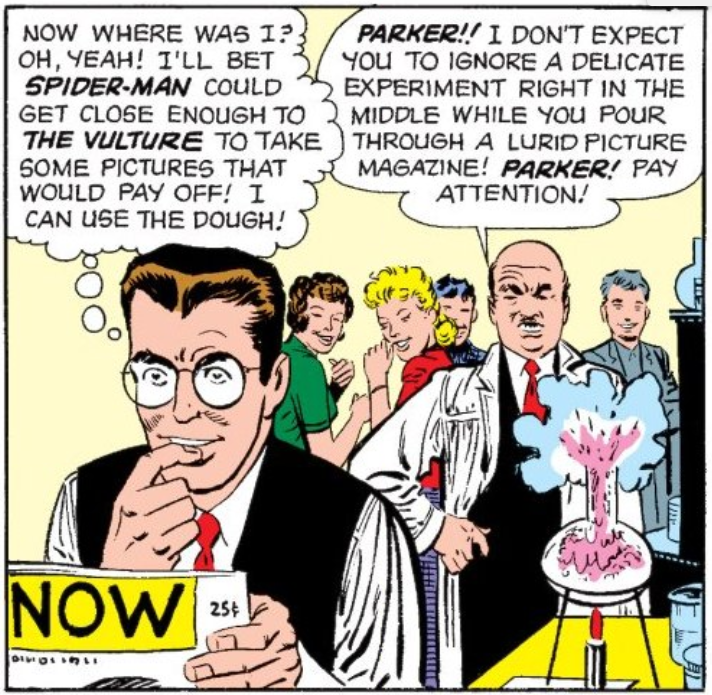
(ii) Peter is angry
Stan and Steve recognised that cliques are a large part of high school life, and can be a source of misery for those outside them. Even after getting his super-powers, Peter continued to be victimised by a popular clique in his high school, and had feelings of resentment towards their leader, Flash Thompson. In a telling moment of opportunism, Peter even considers abandoning Flash after the bully was kidnapped by Doctor Doom whilst dressed as Spider-Man, reasoning that all his problems would be gone if the bully perished.
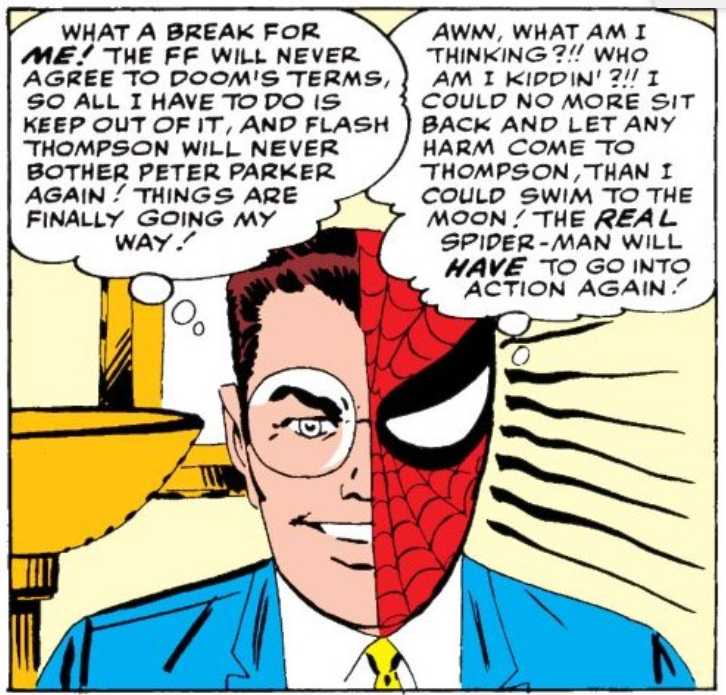
(iii) Peter is proud
Emboldened by his initial victories, Peter became cock-sure and arrogant; even becoming an antagonist to established heroes/philanthropists The Fantastic Four during their first couple of encounters. It’s an ongoing source of dissonance for Peter that, despite his own confidence in his abilities, he is often overmatched by new opponents due to his lack of experience. Exacerbating the issue; Peter’s inflated perception of himself is in stark contrast to the public perception of Spider-Man which is far more ambiguous, as encouraged by Daily Bugle publisher J Jonah Jameson.
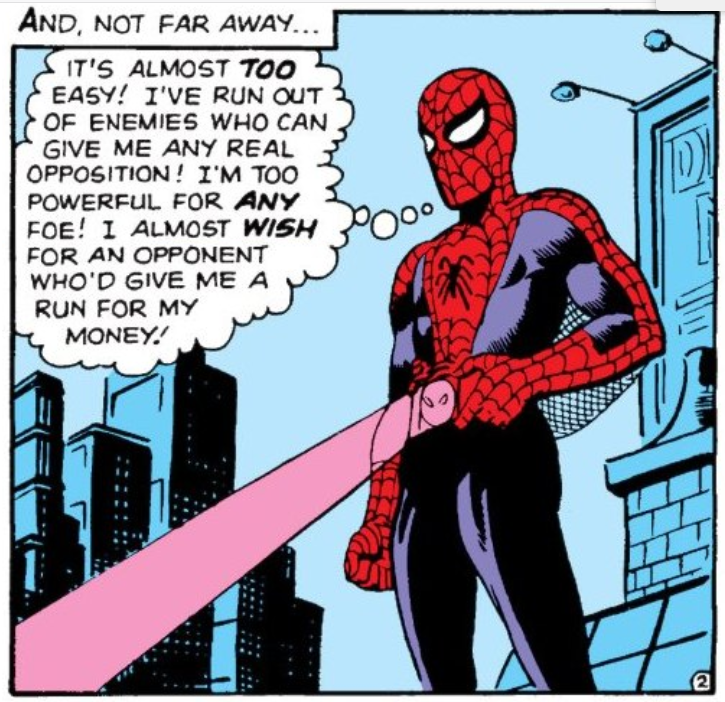
(iv) Peter grows up
Spider-Man plots throughout the years have tended to follow a template that was established early on; the hero initially encounters the villain, gets defeated due to his own hubris, learns a life lesson and comes back stronger to beat the villain. It’s to the credit of Stan and Steve that they didn’t wear this formula out; with Peter progressively showing more and more selfless motivations as the issues progressed. There was a genuine sense of the character becoming a better person, and after a number of issues, when Peter decided to stop wearing his childhood spectacles, and started to develop a closer relationship to Daily Bugle employee Betty Brant, it felt that we were seeing natural and organic character growth.
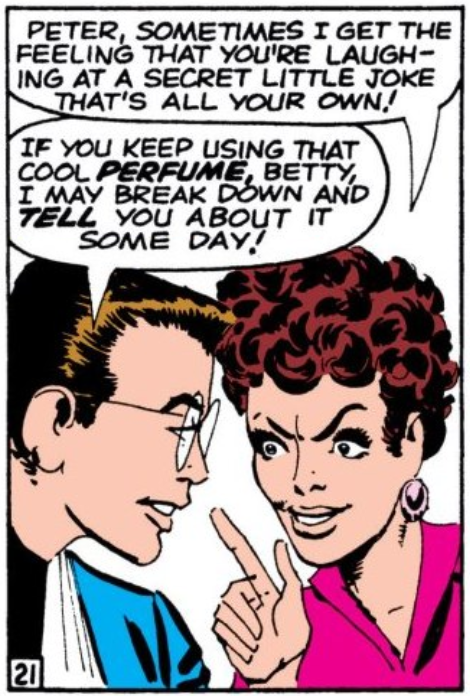
This didn’t all happen by accident. Both creators had decades of experience in comics publishing by the time they produced the first issue of Spider-Man, and were veterans of such diverse genres as Western, Crime, Horror and Romance, so knew exactly how to unpack a compelling plot. Stan Lee was also canny enough to listen to his audience, and he encouraged feedback through the regular letters column, in order to gauge what aspects to develop further. The resulting comics, despite a few missteps, are an absolute delight to read, and have aged surprisingly well. If you think you can relate to the ‘laundry list of character defects’ above, I heartily recommend you search out some copies to read!

